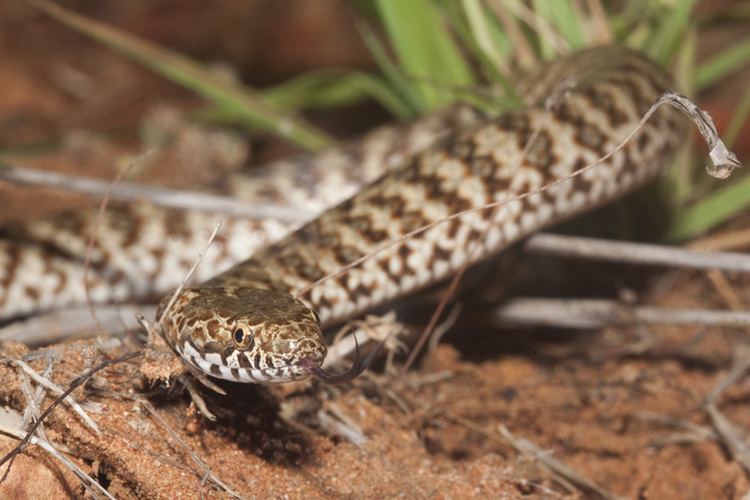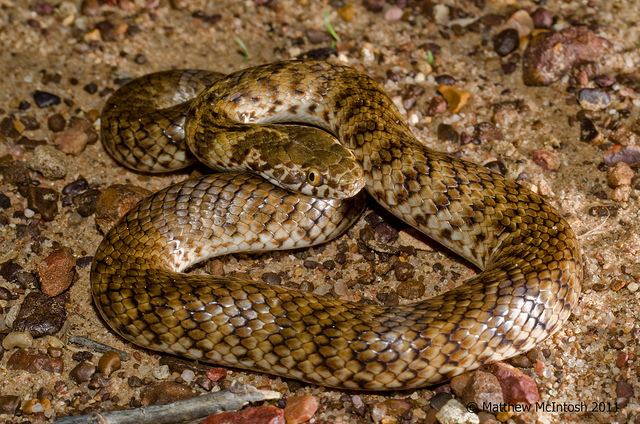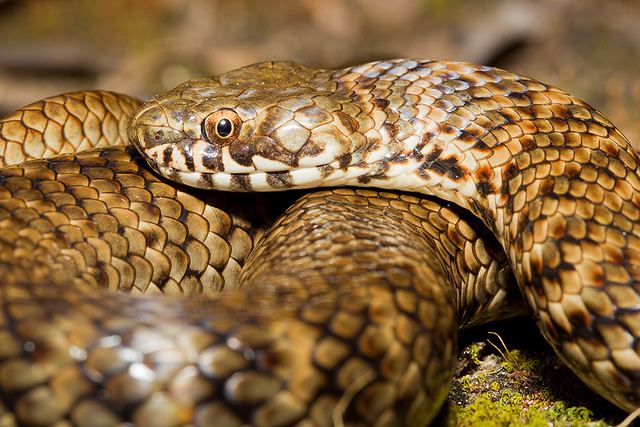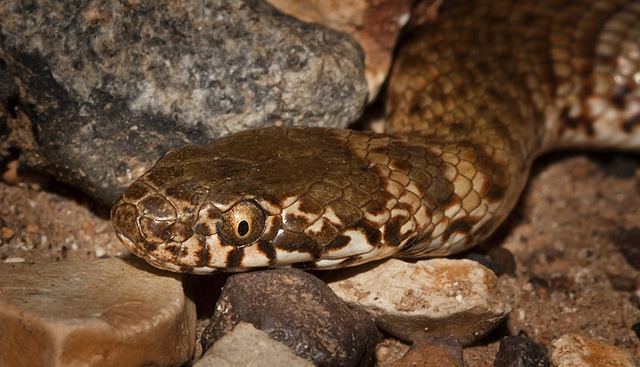Suborder Serpentes Phylum Chordata Rank Species | Subphylum Vertebrata Scientific name Denisonia devisi Higher classification Denisonia Order Scaled reptiles | |
 | ||
Similar Denisonia, Snake, Reptile, Elapidae, Suta | ||
Mud adder kingdom of snakes
The mud adder (Denisonia devisi), also known as De Vis's banded snake, is an elapid snake found in certain regions of eastern Australia, including South West Queensland, northern New South Wales and north-west Victoria. Its scientific and common names refer to Charles Walter De Vis (1829-1915), first director of the Queensland Museum and writer of around 50 papers on herpetology.
Contents

Appearance

The snake is short, thick and slightly flat, and the eyes are set at the top of its head and have a conspicuous iris. Its yellowish-brown to olive-green colour is broken by irregular, ragged-edged, narrow, dark bands running across the body. De Vis's banded snake is sometimes confused with death adders, as both have thick, banded bodies. The main difference is the De Vis's banded snake’s tail does not taper abruptly and its head is not broad and triangular.
Habitat

Mud adders are sluggish snakes inhabiting low-lying areas, particularly near sites subjected to seasonal flooding. During the day, this adder stays in the soil cracks or deep cavities and emerges at night to feed on frogs.
Reproduction

The mud adder gives birth to fully formed young with an average size of 11 cm. A nest consists of three to 11, five on average, baby snakes.
Distribution

The De Vis's banded snake was thought to be confined to alluvial flats in Queensland and New South Wales. However, when mammal expert Peter Menkhorst reported a death adder in north west Victoria, an expedition was carried out in November 2005 to survey the Wallpolla Islands. Instead of finding a death adder, the survey identified a De Vis' banded snake for the first time in Victoria. Further confirmation of the species' new habitat came with a report on the results of raising water levels for environmental purposes at several sites along the Murray River at the Victoria - New South Wales border, making special note of the snake. The snake was found in Wallpolla Island Park, a 9,800 hectare area consisting of floodplain vegetation in the extreme North West, on the Victoria-New South Wales border. It was a designated “Icon Site”, an area of high ecological value within the Murray-Darling basin. The new addition to Victorian snakes was probably carried south during a period of flooding in the Murray River. The usually dry habitat had become more suitable over the years as water and biodiversity increased due to environmental water. Caution is recommended regarding potentially threatening landuse.
